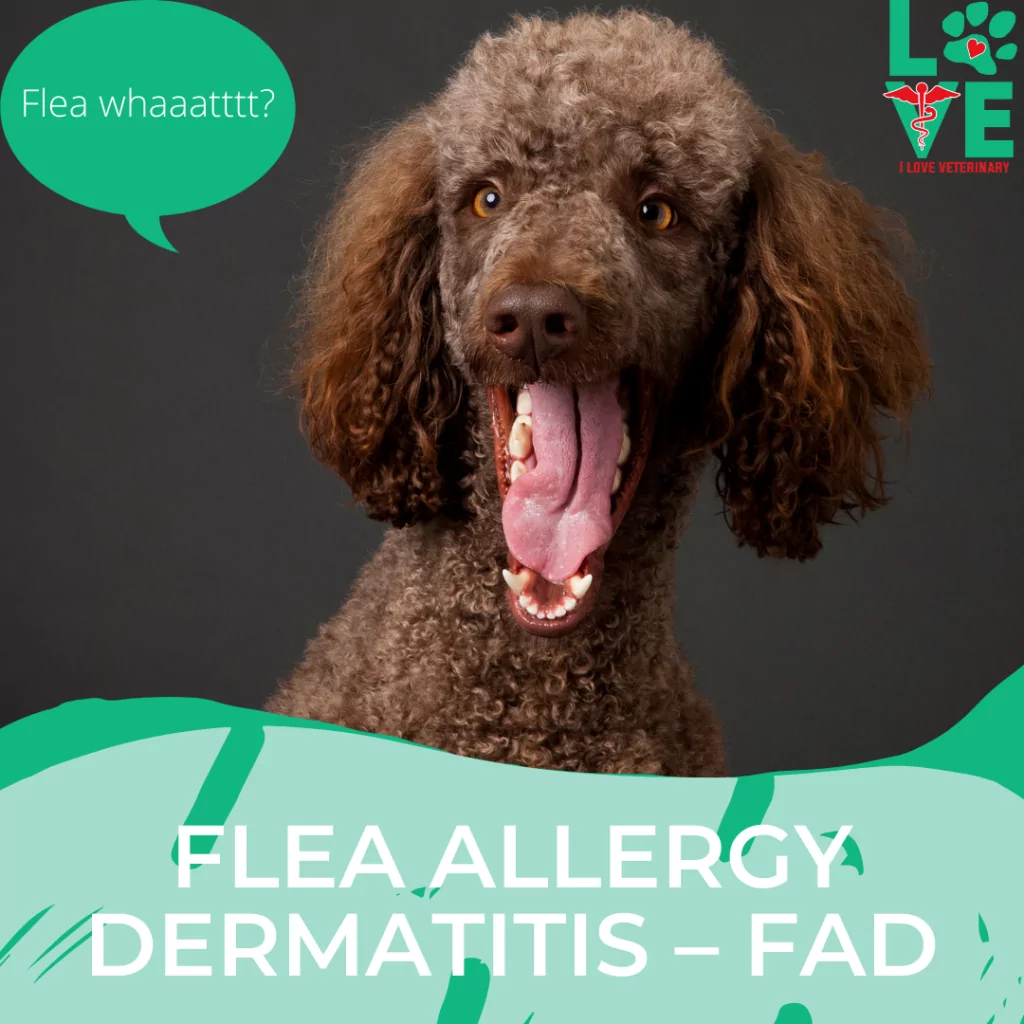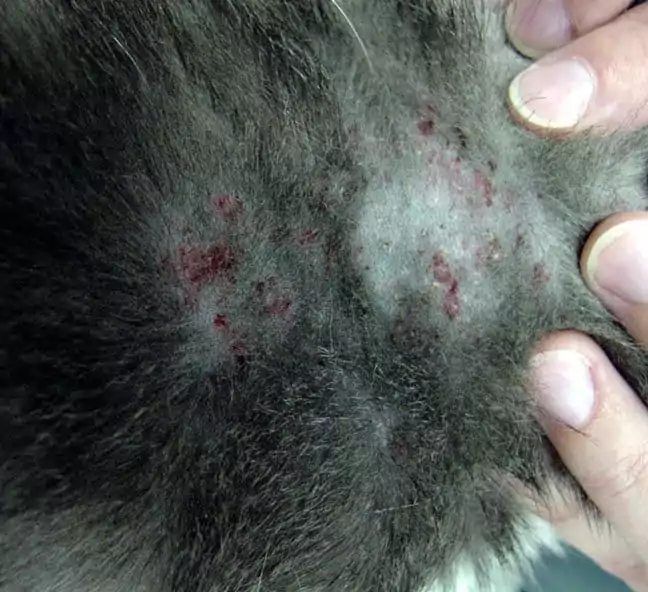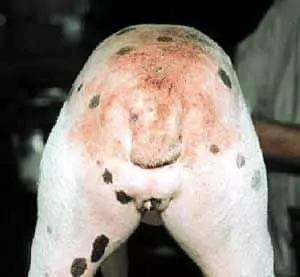What is Flea Allergy Dermatitis (FAD)?
FAD (Flea allergy dermatitis) is a condition which refers to developed hypersensitivity caused by flea bites, in domestic animals. It is the primary cause of allergy-related symptoms in dogs.
Over the years, fleas were divided into more than two thousand species. The one responsible for causing miliary dermatitis in cats is Ctenocephalides felis. There are certain biochemical combinations, such as enzymes, amino acids, and polypeptides in the CF’s saliva which trigger hypersensitive Type I and Type IV reactions on the animal’s skin.

Flea bites and infestations are most common in the southern parts of the globe (all year long), while in the northern parts of the globe we have seasonal infestations (mostly in summer). These infestations occur as a result of extreme heat boosting the development of the fleas.

How is FAD Diagnosed?
One of the first tell-tale signs is hair loss and excessive itching. The area known as the flea triangle (middle of the back, down the base of the tail and the hind legs) will be dry and itchy.
A range of bloodwork can be performed can confirm the prevalence of flea allergies in both cats and dogs. Factors such as the interval of the occurrence, history, signs of fleas, and their excrement need to be taken into consideration.

What are the signs of FAD in dogs?
Allergic dermatitis means that your dog’s immune system is reacting against a sensitivity caused by what is known as an allergen. For a dog scratching, preventative care is the best option.
Signs in dogs develop from the age of five years old. There are no sex or breed dispositions, and it can affect all! One of the easiest ways for an owner to detect this is to imagine your dog wearing a pair of pants. The areas that are covered by the pants are where the irritation will occur. Other signs may be excessive licking or grooming and patches of hair loss in the infected areas.

What are the signs of FAD in cats?
You can witness variable clinical signs, depending on the cats’ systemic sensitivity. Some cats which are more sensitive to flea bite reactions can develop seriously acute clinical signs. While others get by with minimal to non-detectable changes on the surface of the skin.
Miliary dermatitis is found on the neck, back, and face of the cat. It starts out as a papule and then becomes crusted. The lesions are not actual bites, but rather a rash that contains puss, that looks like eczema in humans.
Three other patterns are seen in cats: symmetrical alopecia (caudal dorsum and the flank area most common), head and neck excoriations, and eosinophilic granuloma complex (indolent lip ulcers, eosinophilic plaques, and eosinophilic granulomas)
Treatment, Control, and Prevention of Flea Allergy Dermatitis
It is important to ask oneself the question of why do fleas bite? The reason is that they are looking for a meal consisting of the blood of their host. One of the best ways of treating FAD is knowing how to treat flea bites.
Even if you have not noticed actual fleas on your cat or dog, preventative care is the best practice. This includes the application of a topical liquid that combats against both ticks and fleas on a regular basis.
Effective preventative care is mandatory against flea allergy dermatitis. The different types of preventatives found include injectables, topical, and oral treatment options. For owners purchasing over-the-counter medicine – topical spot-on medications have to be applied to pet skin that is dry and bathing your pet is prohibited for a period of time after application; depending on the product you used. A good rule of thumb is no bathing 2 days before or after the application thereof.
Not over-bathing your pet, and discouraging frequent swimming can also aid as a form of preventative care. Some oral medicine needs to be given with food for best absorption.
In order to prevent flea infestation and completely eliminate the flea population in your home and your pet’s surroundings, you must keep your pet free from FAD at all times. In case the disease occurs, it may take a longer time period for cleaning up adults, larvae, and eggs as a result of the infestation.
First, you should make sure your cat or dog is not susceptible to infestation by using IGRs (Insect growth regulators) and insecticides, which you should apply topically on the animal. IGRs have proven a positive effect in fighting the flea problem, they have extended residual effect and quite convenient dosage formulations. The effect lasts no longer than a couple of months. In order to spread throughout all surfaces of the body, the compound needs several hours (approximately 24 hours).
After flea infestation, another demanding task is exterminating your home (rugs, carpets), bed sheets, back and front yard, dog beds, and dog houses. You need patience and strong efforts in order to achieve positive results. Following the first treatment with insecticides, the second treatment should be executed after one week. In a seven-day period, the adult forms emerge from cocoons. This is why you should repeat the exterminating process once more.
For controlling the secondary skin diseases and chronic pruritus you must apply systemic glucocorticoids, systemic antibiotics (pyoderma), and allergens. The glucocorticoid of choice for FAD is prednisolone at a rate of 0.5-1 mg/kg/d. The application of prednisolone should be discontinued once you gain control over the flea population. Based on the bacterial cultures isolated from the skin lesions, the vet should prescribe proper antibiotic therapy. We are still facing controversial claims related to the effectiveness of allergens extracted from actual fleas. As well as, the hyposensitization process of applying them and the subsequent no reactivity to bites show good results.
If you are concern about this issue, read the article about an Increase in Flea Allergy Dermatitis in Dogs and Cats on our blog.

Prognosis
The prognosis for our furry friends with a confirmed diagnosis of FAD is generally good if there is effective owner accountability and flea bites are prevented as far as possible.
Flea prevention for all animals in the household, including decreasing your pet’s exposure to feral animals and outdoor wildlife can go a long way.
